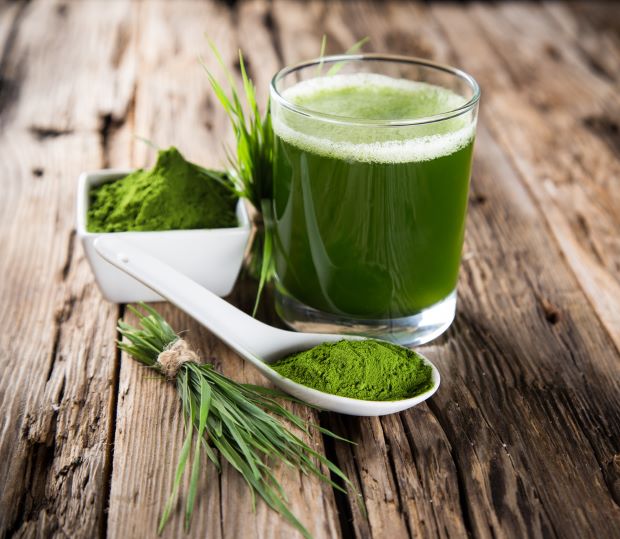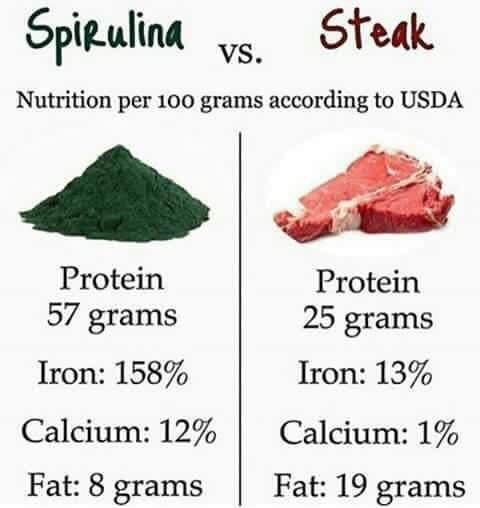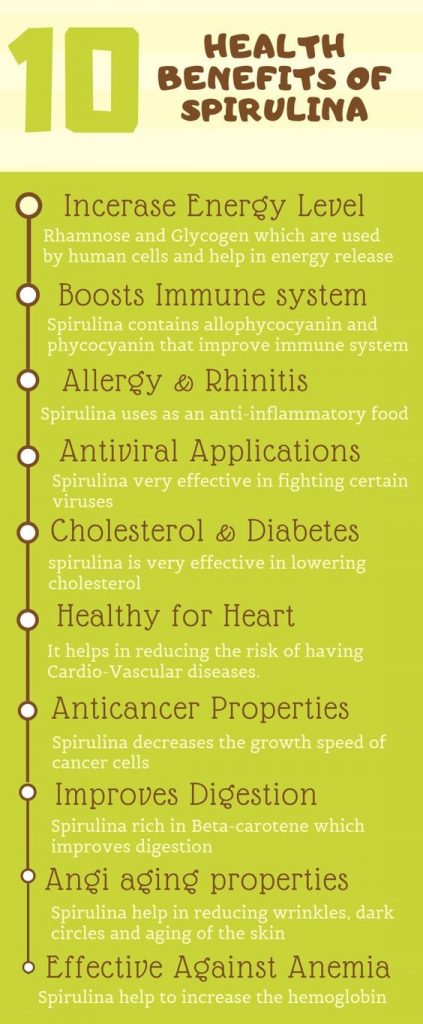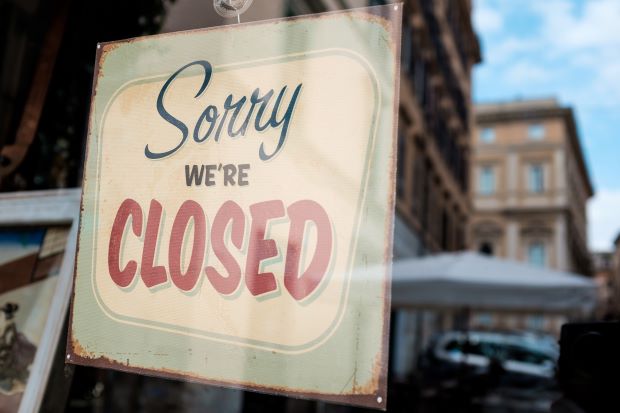The next read is an excerpt from “The Doctor’s Book of Survival Home Remedies”, Chapter: Spirulina, pages 307-309:
If there’s ever a serious global crash, spirulina would be an exceptionally valuable food source.
As food shortages would most likely be widespread, it would be – without question – vital to have nutritionally dense food like this available. Let me explain why keeping a supply of spirulina on hand is wise.
In 1974, the United Nations declared spirulina “the best food for the future” at its World Food Conference. That was over 40 years ago, and spirulina has more than lived up to this claim. Research has revealed the immense nutritional and health benefits of this amazing superfood.
It also proves that great things can come in very small packages. Spirulina is a type of microscopic bacteria known as blue-green algae. The term “algae” refers to a diverse group of aquatic organisms that are capable of producing oxygen through photosynthesis.
Spirulina naturally grows in warm, alkaline lakes. Ancient Aztecs used to harvest spirulina from lagoons around what is now Lake Texcoco in Mexico. Today, the Kanembu people who live along the banks of Lake Chad in Africa still harvest spirulina from the lake as they have for centuries. They dry it into cakes, which are then crumbled and included in the majority of their meals.
Compared to other foods by weight, spirulina is one of the most nutritious foods on the planet[1]. It’s high in protein and contains all essential amino acids. Spirulina is also high in B vitamins, iron, magnesium, potassium, and a wide range of other vitamins, minerals, and antioxidants. As spirulina is a very simple organism, the proteins and nutrients are easily digested and absorbed.
Spirulina is such an important food source that various international organizations, such as IIMSAM[2], have formed to help establish small-scale spirulina production in impoverished communities throughout the world. These small spirulina producers have made tremendous advances in combating malnutrition and promoting local food security.
The ecological footprint of spirulina is also relatively small. As spirulina grows in water, it doesn’t require any fertile land. It doesn’t even need much water because the water it grows in can be reused. As the UN predicted in 1974, spirulina truly is the food we need in today’s world.
>>> GET THE BOOK TO DISCOVER THE BOOK <<<
Conditions Spirulina Can Remedy
Research is also discovering that spirulina has a wide range of health benefits. In fact, the World Health Organization predicts that spirulina will become one of the most curative and prophylactic foods of the twenty-first century.
Spirulina’s nutritional density may actually be the secret behind its health-boosting effects. A strong immune system is the foundation of good health. Yet, many of us suffer from a range of nutritional deficits that we may not be aware of. And these deficits are known to impair your immune function.
Malnutrition in some form affects almost 11% of the entire earth’s population[3]. And it’s not only in lower-income countries. According to the Child Welfare League of America, more than 30 million Americans[4] experience hunger regularly, or are at risk of going hungry.
Also, not having enough food isn’t the only problem. As we eat increasingly more processed foods, we’re often consuming foods that are high in calories, but lack essential vitamins, minerals, and other nutrients. This is called “hidden hunger”, and it’s estimated to affect up to 85% of Americans[5].
A 2016 scientific review[6] concluded that “spirulina can be used as a source for alleviating hidden hunger or micronutrient deficiencies”. Eating as little as one gram of spirulina per day is proven to correct malnutrition in a small child[7] in a few weeks. And international spirulina supplementation programs have helped rehabilitate many malnourished adults affected by HIV/AIDS with only two grams of spirulina per day.
In addition, research suggests spirulina can help prevent or treat many different conditions, including:
- Age-related Brain Degeneration
- Anemia
- Cancer
- Diabetes and Pre-diabetes
- Fibromyalgia
- Hay Fever
- Heavy Metal Toxicity
- Herpes
- High Blood Pressure
- High Cholesterol
- HIV Infection
- Inflammation
- Malnutrition
- Obesity
How to Grow Spirulina
As mentioned above, spirulina is a type of algae that grows in water. But don’t let that put you off. Growing spirulina is actually quite a straightforward process that’s used successfully by many families and small growers throughout the world.
And considering the outstanding nutritional and health benefits of spirulina, it’s well worth learning how to grow this superfood. You can buy spirulina supplements and powders, but spirulina loses some of its nutritional properties during the commercial dehydration process. In addition, a study[8] that compared fresh and dried spirulina found that fresh spirulina has more bioactive compounds, which makes it easier to digest and absorb.
Commercial spirulina may also be grown overseas in open ponds, where contamination with heavy metals and other pollutants is common. In fact, a Chinese study[9] found that 95% of spirulina supplements in the country contained serious liver toxins known as microsystins. For this reason, the Medical Center at the University of Maryland recommends that you always check the source of any spirulina supplements you buy.
You can easily avoid these risks by growing your own spirulina. You’ll ensure a safe, sustainable supply of this amazing food source for years to come.
>>> GET THE BOOK TO DISCOVER THE BOOK <<<
It is forbidden to replicate any of the above content without Dr. John Herzog’s consent. However, in order to support the discounts and donations we’re making, we depend on free advertising. The doctor needs your help in sharing this with the world.













































































Thanks for the comments on Spirulina. I and my family have been taking it for years. I started in 1982 as an insurance salesman. Through taking 10 to 20 grams a day since at 78 years young, Other friends and relative have had their blood sugars back to normal Research has also shown the it is one on the best, if not the best in overcoming or reducing many chronic disorders associated with malnutrition, starvation, obesity, various cancers, diabetes, hypoglycemia, radiation sickness, to mention a few of its benefits. As well as an excellent animal feed. Most importantly, it protects & builds the body’s immune system against allergies, viruses, free radicals and other chronic disorders with over 70 vital nutrients in one tablespoon of powder mixed with juices, soups etc. The New York Times, reported in 1989 that chemical derived from blue-green algae such as Spirulina were found to be ‘remarkable active’ against the AIDS virus in various experiment by Federal scientist. Spirulina Maxima or Spirulina Platensis are the two main forms that have been tested and safe by the USFDA: (FDA Talk Paper No. 41, 160, June 23, 1981 and ‘ designated as safe and contains no contaminated or adulterated substances” . Also GRAS (Generally Recognized as Safe-GRN 000101) ) by the Center for Food Safety.
Powders in general have a special place in my preparedness which is the ability to travel light and fast for days and particularly when there is danger or leasure is otherwise precluded with tasks because powders can be concentrated nutrition and energy that don’t need cooking nor meal preparation other than mixing with water and drinking on the go. I don’t look for the answer in any one powder as I have a variety depending upon what is needed and the right balance for the moment.
Do NOT Buy commercially grown Spirulina powder – most are harvested from open water sources and are likely Loaded with organo/ metalic toxins ( i.e., metallic oxides, carbonates, and sulfates. ) Does Anybody know where to purchase the Live Cultures so that we can grow our own colony to harvest ?
you never did tell how to grow your own under “How to
grow
spirulina
The book gives the full details. It does tell you to get the book for the full chapter. In my copy of the book, Spirulina is covered on pages 259-264.
I have a tropical fresh water fish tank and I bought some plants that had a strange bit of green goo on them. The goo was actually Spirulina. Now its a constant battle to keep this stuiff under control. Just a thought.
Interesting, I’ve a friend who is growing algae to process into a diesel fuel substitute. He gets more oil from algae than an equal amount of barley! The leftover (pressed again) is pressed into fuel pellets . Maybe spirulina can be grown in a similar way. The growing tanks are vertical, so the growing media is in cubic feet and with grow lights grow 24/7.
I haven’t been able to find a safe source to purchased the powder from, Any recommendations?
Mike Adams at NaturalNews.com
Great recommendation! Mike is a foresenic scientists, amongst other things. He tests every batch of whatever products he sells and makes sure it is not contaminated with heavy metals nor glyphosate, and who knows what else. I would trust Mike’s Spiraling over ANYONE else’s!
JESS, a Certified Natural Health Professional since 2006
My functional med dr said Hawaiian Spirulina is the best. I think I saw it on Amazon, but check around.
I am wanting to purchase the books and I cannot get any cc to go thru. I called the click bat number. The lady was very rude and told me to stop trying to order!! how crazy is that!! Can anyone help?
Hello, Nick. One of our colleagues will contact you via email Thank you for your interest.
I have an estrogen positive cancer, and this is contraindicated for such. The anti-oxidant properties will promote cancer because cancer thrives on an anaerobic environment.
Duckweed is supposed to suppress mosquito larva. Asians call it water eggs because you can live on it. The most common way today to raise it is with the effluent from methane digesters. It can double growth even 24+ hours if the water is fertile. It purifies water and so on. Vietnamese eat a lot it because of low crop- and livestock yields. Rice paddles are fertilized to make it boom in growth, then allowed to go dry using the weed as a fertilizer for millet and vegetables.
So is the blue-green algae that grows wild on our lakes (are that we are told is dangerous) the same as this spirulina? Just wondering …
How much of all that wonderful stuff is bioavailable? Not nearly enough fat…be sure to supplement healthy animal fat when you can.
how can i get some and how to grow it
I need the book
Hello, Chick. One of our colleagues will contact you via email.Thank you for your interest.
Hi Sabina , I would like the book too.
God bless you.
Rachel.
Email address is [email protected]
Hello, Rachel. One of our colleagues will contact you via email.Thank you for your interest.
I have never grown Spirulina and I don’t know anything at all about it but you might be interested in this info from ChatGPT:
“Growing spirulina involves preparing a nutrient-rich, alkaline growth medium {in non-chlorinated, purified water}1, inoculating it with a spirulina culture, and maintaining the right light, temperature, and pH conditions {and nutrients. prs}1. With regular care and monitoring, you can harvest spirulina within a few weeks, providing you with a fresh, nutritious supplement.”
How much Spirulina will your family need and how often? Calculate the square footage, weight and number of containers.
1 You don’t want anything growing in your garden except Spirulina.
2 My addition. Stock sufficient to maintain growth over time.
I’m not suggesting that this is impossible or even difficult but it clearly requires some study, preparation and acquisition of equipment and supplies.
I have 2 very young niece’s and they are sisters who now both have cervical cancer in the youngest at age 29 she was treated at Mayo and do ok right now but just had to have another surgery in November. Her sister is 43 now, bday was in November, she had done everything she could to try to save herself as in a total hysterectomy and her breast removed. She did this in hope she would not get cancer, but a few months after she had finally healed she found out she had anus cancel. She was treated at Mayo all the month of October. Radiation everyday and 6 chemo pills a day. We we all tested for the dna genetic cancer and turned up positive. My mom, sister and myself. I already lost a brother to cancer over 20 years ago to liver cancer just out of the blue because he didn’t drink or smoke. So now the older niece is looking into the herbal remedies that she can use that doesn’t interfere with her treatments. I ordered her the books mentioned in these articles and from Claude Davis plus Dr Nicole. She did all of this in hope to make it a good while since she has 2 young sons ages 8 and 9. My brothers sons were the same age when he passed away. I need to know where to order this book, since especially their mother is a severe diabetic and my mom has had bladder cancer. I have a lot of books mentioned by the same authors but I have not found anything on this subject . I can grow it or my already have it around but this is the first I’ve heard of it.
Please contact me re: how to grow spirulina
I am interested in reliable information to grow spirulina before investing in anything.